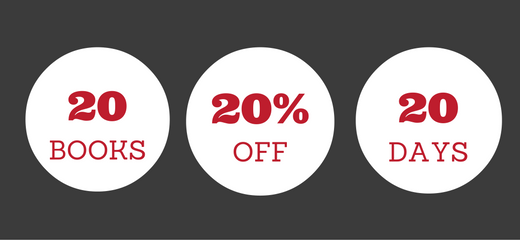
Give yourself the gift of more time in the classroom when you combine science and literacy! Find a new teaching technique that revitalizes your classroom, or learn to ask the questions that unlocks students’ love of science. And from December 1 to 20, 2016, take 20% off our top 20 titles when you use promo code DEC20 to purchase them online in the NSTA science store.* Browse the selections below to find your favorites, including the book, ebook, and mixed media sets.
Even More Picture-Perfect Science Lessons delivers the whole package: teacher-friendly lessons, strong standards-based science content, and a kid-magnet formula that will get your students engrossed in science while they improve their reading skills.
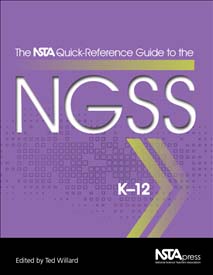 The NSTA Quick-Reference Guide to the NGSS, K-12
The NSTA Quick-Reference Guide to the NGSS, K-12
Indispensable to science teachers at all levels, as well as to administrators, curriculum developers, and teacher educators, the book’s emphasis is on easy. Find the parts of the Next Generation Science Standards that are most relevant to you, acquaint yourself with the format, and find out what each of the different parts means.
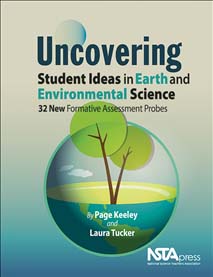 Uncovering Student Ideas in Earth and Environmental Science: 32 New Formative Assessment Probes
Uncovering Student Ideas in Earth and Environmental Science: 32 New Formative Assessment Probes
If you’re new to formative assessment probes, you’ll love the latest book in the bestselling Uncovering Student Ideas in Science series. Authors Page Keeley and Laura Tucker give you 32 engaging questions, or probes, that can reveal what your students already know—or think they know—about core Earth and environmental science concepts.
Teaching for Conceptual Understanding in Science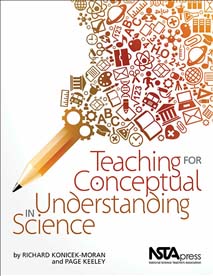
What do you get when you bring together two of NSTA’s bestselling authors to ponder ways to deepen students’ conceptual understanding of science? A fascinating combination of deep thinking about science teaching, field-tested strategies you can use in your classroom immediately, and personal vignettes all educators can relate to and apply themselves.
Use promo code DEC20 to save 20% on these books online in the NSTA science store.
Good through December 20, 2016.
The BSCS 5E Instructional Model: Creating Teachable Moments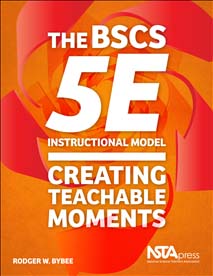
With this book, you can stop wishing you could engage your students more fully and start engaging. Magic moments no longer have to be random. The BSCS 5E Instructional Model can help you create more teachable moments in your classroom. This book addresses every teacher’s concern: how to become more effective in the classroom—and enjoy more of those teachable moments.
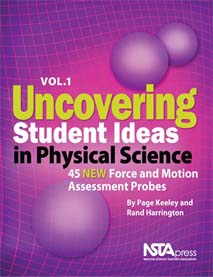 Uncovering Student Ideas in Physical Science, Volume 1: 45 New Force and Motion Assessment Probes
Uncovering Student Ideas in Physical Science, Volume 1: 45 New Force and Motion Assessment Probes
Nationally known science educator Page Keeley—principal author of the hugely popular, four-volume NSTA Press series Uncovering Students Ideas in Science—has teamed up with physicist and science educator Rand Harrington to write this first volume in their new series on physical science. They begin with one of the most challenging topics in physical science: force and motion.
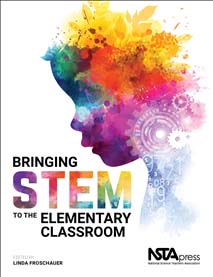 Bringing STEM to the Elementary Classroom
Bringing STEM to the Elementary Classroom
Many resources help you encourage young children to learn about science, technology, engineering, and math (STEM). But only this book of quality STEM experiences was curated by the veteran educator who edits Science and Children, NSTA’s award-winning journal for elementary teachers. Sensitive to the needs of both preK–5 students and busy teachers, editor Linda Froschauer developed Bringing STEM to the Elementary Classroom as a comprehensive source of classroom-tested STEM investigations.
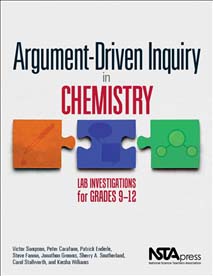 Argument-Driven Inquiry in Chemistry: Lab Investigations for Grades 9–12
Argument-Driven Inquiry in Chemistry: Lab Investigations for Grades 9–12
Transform your chemistry labs with this guide to argument-driven inquiry. Designed to be much more authentic for instruction than traditional laboratory activities, the investigations in this book give high school students the opportunity to work the way scientists do. They learn to identify questions, develop models, collect and analyze data, generate arguments, and critique and revise their reports. Thirty field-tested labs cover a broad range of topics related to chemical reactions and matter’s structure and properties.
Use promo code DEC20 to save 20% on these books online in the NSTA science store.
Good through December 20, 2016.
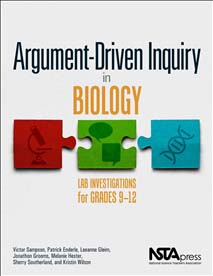 Argument-Driven Inquiry in Biology: Lab Investigations for Grades 9–12
Argument-Driven Inquiry in Biology: Lab Investigations for Grades 9–12
Are you interested in using argument-driven inquiry for high school lab instruction but just aren’t sure how to do it? You aren’t alone. This book will provide you with both the information and instructional materials you need to start using this method right away. Argument-Driven Inquiry in Biology is a one-stop source of expertise, advice, and investigations.
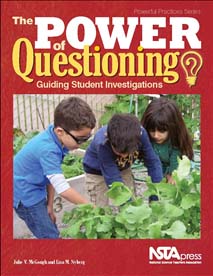 The Power of Questioning: Guiding Student Investigations
The Power of Questioning: Guiding Student Investigations
The authors of this book invite you to nurture the potential for learning that grows out of children’s irrepressible urges to ask questions. The book’s foundation is a three-part instructional model, Powerful Practices, grounded in questioning, investigation, and assessment. To bring the model to life, the authors provide vivid pictures as well as links to special videos and audio recordings. You can actually hear teachers and students engage in questioning and watch two easy-to-adapt examples (involving plants and life cycles) of the model in action. Then, you can implement new strategies right away in your own classroom, regardless of grade or topic.
Teaching Energy Across the Sciences, K–12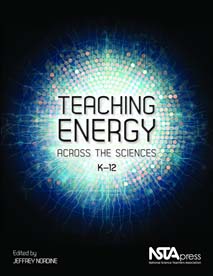
It’s a simple fact: Students will learn about energy more effectively if teachers present it consistently in all grades and across all scientific disciplines. This book gives you the strategies and tools you need to help your students understand energy as a concept that cuts across all sciences. The result will be a clear lens for interpreting how energy works in many contexts, both inside and outside the classroom.
Creative Writing in Science: Activities That Inspire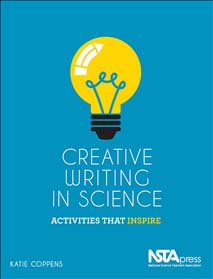
You can tell a teacher wrote this book because it’s so flexible and classroom friendly. Each of the 15 science activities comes with strategies for teaching a creative writing style, whether prose or poetry. The assignments work as in-class activities, homework, or final assessments for a unit. Also included are reproducible handouts, graphic organizers, writing models, scoring rubrics, and connections to the Next Generation Science Standards and Common Core State Standards.
Use promo code DEC20 to save 20% on these books online in the NSTA science store.
Good through December 20, 2016.
Notable Notebooks: Scientists and Their Writings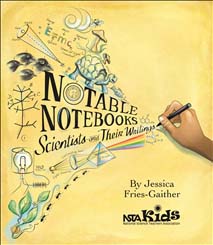
Take a trip through time to discover the value of a special place to jot your thoughts, whether you’re a famous scientist or a student. Notable Notebooks: Scientists and Their Writings brings to life the many ways in which everyone from Galileo to Jane Goodall has used a science notebook, including to sketch their observations, imagine experiments, record data, or just write down their thoughts. You also get four steps to starting your own notebook, plus mini-bios of the diverse featured scientists.
Companion Classroom Activities for Stop Faking It! Force and Motion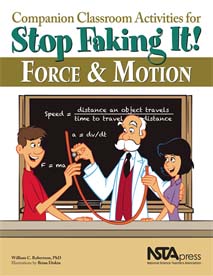
Never has it been so easy for educators to learn to teach physical science with confidence. Award-winning author Bill Robertson launched his bestselling Stop Faking It! series with Force and Motion—offering elementary and middle school teachers a jargon-free way to learn the background for teaching physical science with confidence. Combining easy-to-understand—if irreverent—explanations and quirky diagrams, Stop Faking It! Force and Motion helped thousands of teachers, parents, and homeschoolers conquer topics from Newton’s laws to the physics of space travel.
Science Learning in the Early Years: Activities for PreK–2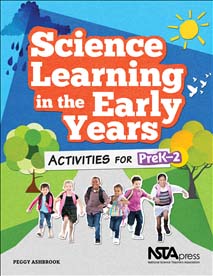
When you start to immerse yourself in Science Learning in the Early Years, you’ll see that the value of this collection goes far beyond activities. The author is teacher, columnist, and blogger Peggy Ashbrook, who has been called a force in promoting high-quality science content for grades preK–2. Reading this book makes you feel like you’re talking with a fellow practitioner—one who’s been where you are and wants to share all the insights she’s gained. Meeting her through her writing is the next best thing to having her as your own personal guide to the challenges and fun of working with the youngest scientists.
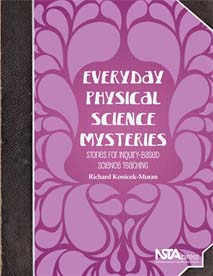 Everyday Physical Science Mysteries: Stories for Inquiry-Based Science Teaching
Everyday Physical Science Mysteries: Stories for Inquiry-Based Science Teaching
What can make a ball roll faster? Does the temperature of wood affect the heat of a fire? How can old-fashioned tin can telephones teach today’s students about sound and technology? By presenting everyday mysteries like these, this book will motivate your students to carry out hands-on science investigations and actually care about the results. The 21 open-ended mysteries focus exclusively on physical science, including motion, friction, temperature, forces, and sound.
Use promo code DEC20 to save 20% on these books online in the NSTA science store.
Good through December 20, 2016.
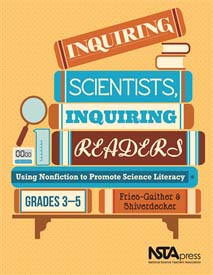 Inquiring Scientists, Inquiring Readers: Using Nonfiction to Promote Science Literacy, Grades 3–5
Inquiring Scientists, Inquiring Readers: Using Nonfiction to Promote Science Literacy, Grades 3–5
nquiring Scientists, Inquiring Readers will change the way you think about engaging your students. The authors show that it’s possible to integrate literacy into elementary-level science instruction without sacrificing quality in either area. This unique book will show teachers how to teach science using a variety of nonfiction text sets (such as field guides, reference books, and narrative expository texts) and replace individual lessons with a learning-cycle format (including hands-on investigations, readings, directed discussion, and problem solving).
Problem-Based Learning in the Life Science Classroom, K–12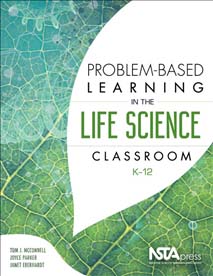
This book doesn’t just explain why, how, and when to implement problem-based learning (PBL). It also provides you with what many think is the trickiest part of the approach: rich, authentic problems. The authors facilitated the National Science Foundation–funded PBL Project for Teachers and used the problems in their own science teaching, so you can be confident that the problems and the approach are teacher tested and approved.
Using Physical Science Gadgets and Gizmos, Grades 3–5: Phenomenon-Based Learning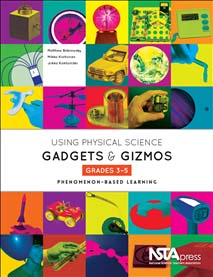
What student—or teacher—can resist the chance to experiment with Velocity Radar Guns, Running Parachutes, Super Solar Racer Cars, and more? The 30 experiments in Using Physical Science Gadgets and Gizmos, Grades 3–5, let your elementary school students explore a variety of phenomena involved with speed, friction and air resistance, gravity, air pressure, electricity, electric circuits, magnetism, and energy.
Once Upon an Earth Science Book: 12 Interdisciplinary Activities to Create Confident Readers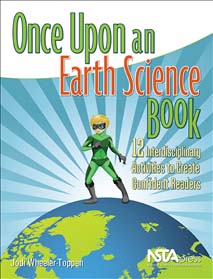
You’ll love how practical and easy this book is to use. Jodi Wheeler-Toppen is an experienced teacher who couldn’t find a resource that integrated reading, writing, and science—so she wrote it herself. She’s also the author of NSTA Press’s Once Upon a Life Science Book (see p. 7). “As you and your students work through these lessons together,” she predicts, “you will be able to watch their confidence as readers—and your confidence as a reading educator—grow.”
Use promo code DEC20 to save 20% on these books online in the NSTA science store.
Good through December 20, 2016.
NSTA Press® is where you’ll find the best classroom-ready activities, hands-on approaches to inquiry, relevant professional development, the latest scientific education news and research, assessment, standards-based instruction—NSTA Press® develops and produces the high-quality resources that science educators need, in all disciplines. Download a free catalog or sample free PDFs of NSTA Press chapters at the Science Store. Subscribe to NSTA’s Book Beat, our award-winning monthly newsletter!
Follow NSTA
*Offer good only on new purchases, made online through the NSTA Science Store, from December 1-20, 2016. Cannot be combined with any other offer.





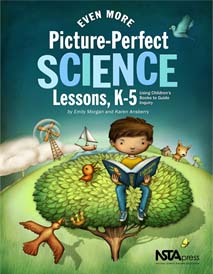 Even More Picture-Perfect Science Lessons: Using Children’s Books to Guide Inquiry, K–5
Even More Picture-Perfect Science Lessons: Using Children’s Books to Guide Inquiry, K–5 The NSTA Quick-Reference Guide to the NGSS, K-12
The NSTA Quick-Reference Guide to the NGSS, K-12

















 The seasonal decline in the amount of direct sunlight in North America is bringing an end to my garden growing season. The leaves of deciduous trees in my region are mostly off the trees now. Children have been helping rake them into big piles to jump into. We sort out the sticks so no one gets poked when they jump. A few children with allergies to mold choose other tasks to tend the play area: reseeding the grassy places and washing the fence with water. As we pile up the leaves I’m thinking of how we will use them for mulch in the garden bed to prevent weed growth over the winter. What looks like a large amount now will be much reduced by weathering and the work of detritivores such as isopods, just one of those small animals that eat decaying plant matter.
The seasonal decline in the amount of direct sunlight in North America is bringing an end to my garden growing season. The leaves of deciduous trees in my region are mostly off the trees now. Children have been helping rake them into big piles to jump into. We sort out the sticks so no one gets poked when they jump. A few children with allergies to mold choose other tasks to tend the play area: reseeding the grassy places and washing the fence with water. As we pile up the leaves I’m thinking of how we will use them for mulch in the garden bed to prevent weed growth over the winter. What looks like a large amount now will be much reduced by weathering and the work of detritivores such as isopods, just one of those small animals that eat decaying plant matter. Isopods (aka roly-polies, pillbugs, slaters, wood lice, potato bugs and other names) are my favorite animal to keep in containers for children to observe and handle. They are easy to find, require just a little attention, and are safe and durable for handling. Children learn about diversity in living organisms, how to best use magnifiers while counting the number of legs on these small crustaceans, and how to provide the needs of an animal that is so different from themselves. Learn more at:
Isopods (aka roly-polies, pillbugs, slaters, wood lice, potato bugs and other names) are my favorite animal to keep in containers for children to observe and handle. They are easy to find, require just a little attention, and are safe and durable for handling. Children learn about diversity in living organisms, how to best use magnifiers while counting the number of legs on these small crustaceans, and how to provide the needs of an animal that is so different from themselves. Learn more at: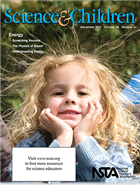

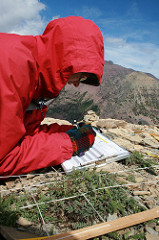




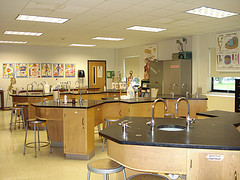
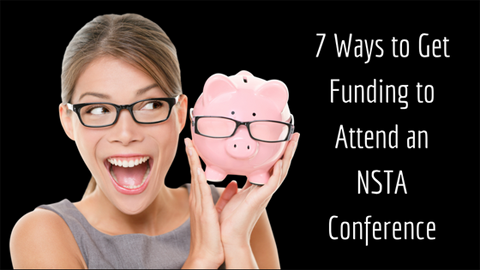
 Jennifer Williams is the Steering Committee Chairperson for the 2017 STEM Forum & Expo and is the Department Chair, Lower School Science at the Isidore Newman School in New Orleans, LA; follow Jennifer on Twitter
Jennifer Williams is the Steering Committee Chairperson for the 2017 STEM Forum & Expo and is the Department Chair, Lower School Science at the Isidore Newman School in New Orleans, LA; follow Jennifer on Twitter